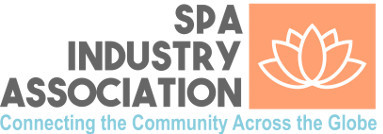
The pursuit of physical fitness often walks hand in hand with the quest for recovery and rejuvenation. After pushing our bodies to their limits in pursuit of strength, flexibility, and endurance, the importance of muscle recovery becomes important. Achieving peak performance has as much to do with what you do to train as how you rest and recover from your sessions. In this comprehensive guide, we’ll explore six transformative methods to aid muscle recovery after workouts.
Embrace the Power of Proper Hydration
The journey towards optimal muscle recovery begins with hydration. Water is the lifeblood of recovery, acting as the medium through which nutrients travel to fatigued muscles and waste products are whisked away. After a rigorous workout, replenishing lost fluids should be your first priority. A good hydration with enough water and the incorporation of electrolyte-rich beverages can further enhance this process, helping to balance your body’s minerals essential for muscle function and recovery. Envision your body as a well-tended garden in which, just as plants thrive on a steady supply of water, so too do your muscles require this vital resource to heal and grow stronger.
The Role of Nutrition in Muscle Recovery
Beyond water, you’ll need to consider the foods you eat. Nutrition is another important aspect of muscle recovery, acting as the building blocks for repair and growth. A post-workout meal that combines both proteins and carbohydrates will replenish energy reserves and also provide the necessary nutrients to repair muscle fibers. Protein, the cornerstone of muscle repair, supports the rebuilding process, while carbohydrates help restore glycogen levels, the primary fuel source for your workouts. Plus, antioxidants found in fruits and vegetables help combat the oxidative stress that workouts can place on your body. This approach to nutrition underscores the philosophy of holistic healing, where every meal is an opportunity to nourish your body and support your wellness journey.
Mastering the Art of Active Recovery
Active recovery, the gentle cousin of rest days, proposes a low-intensity activity alternative to complete rest. This could include activities like walking, yoga, or a leisurely bike ride—anything that gets your blood flowing without taxing your muscles. The philosophy behind active recovery is simple yet profound: by engaging in low-intensity movement, you increase circulation, and help to flush out lactic acid and deliver nutrients to sore muscles. This method not only accelerates the healing process but also ensures that you’re still moving, aligning with the natural rhythm of your body’s need for activity and rest.
The Revolutionary Impact of Leg Compression for Muscle Recovery
Leg compression is another strategy that can help you recover from your workouts. This technique leverages the science of controlled pressure to enhance blood circulation, thereby accelerating the recovery process. Leg compression works by gently squeezing the muscles in a rhythmic fashion, mimicking the body’s natural pump mechanism to facilitate the removal of waste products like lactic acid. The benefits of this method are manifold, given that it not only reduces soreness and swelling but also improves lymphatic drainage, leading to quicker recovery times.
A compression leg machine can be used at home or in a wellness center or physical therapy office. It’s a passive recovery tool that allows you to relax while reaping the benefits of improved circulation and muscle repair. This device offers a user-friendly, at-home solution for achieving professional-grade compression therapy. Whether you’re an athlete looking to enhance your recovery or someone exploring the depths of wellness practices, incorporating leg compression into your routine can significantly impact your recovery journey.
The Soothing Embrace of Heat and Cold Therapy
Cold therapy, or cryotherapy, involves applying cold packs or taking ice baths to reduce inflammation and numb pain. It’s especially effective immediately after a workout to minimize swelling and discomfort.
On the other hand, heat therapy can be just as beneficial, albeit for different reasons. Applying heat to sore muscles through warm baths, heat packs, or even sauna visits helps increase blood flow and relax tight muscles. The warmth not only soothes aches but also makes the muscles more pliable, reducing the risk of injury. By alternating between cold and heat therapy, you can create a synergistic effect that maximizes muscle recovery, providing a comforting, healing experience that touches both body and soul.
Embracing Restorative Sleep
Last but certainly not least, the cornerstone of any recovery process is quality sleep. Simply put, sleep is when the magic happens. During this time, your body undergoes repair and regeneration, healing the tears and strains of the day’s activities. Deep, restorative sleep boosts growth hormone levels, facilitating muscle repair and growth. Ensuring you get enough restful sleep is not just about quantity but also quality. Creating a calming bedtime routine, maintaining a cool, dark sleep environment, and avoiding stimulants before bed can all contribute to a night of deep, rejuvenating sleep.
–



